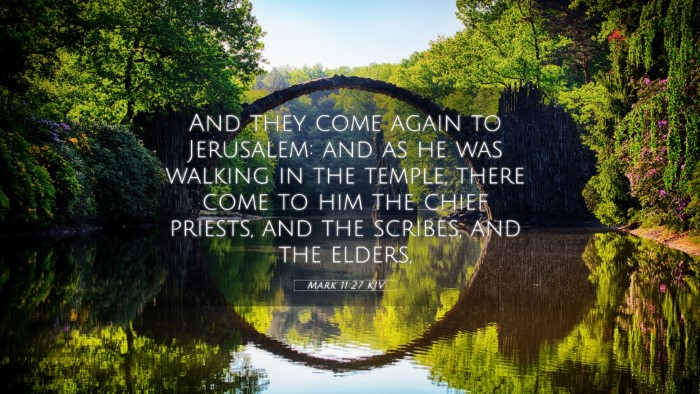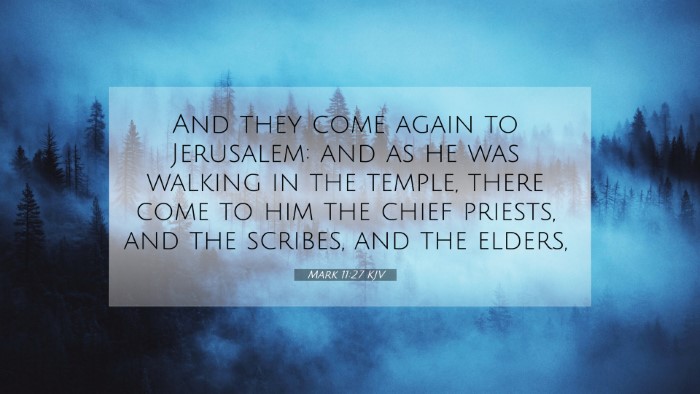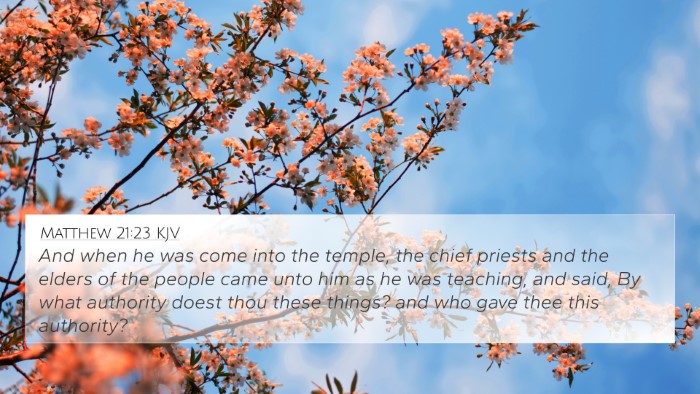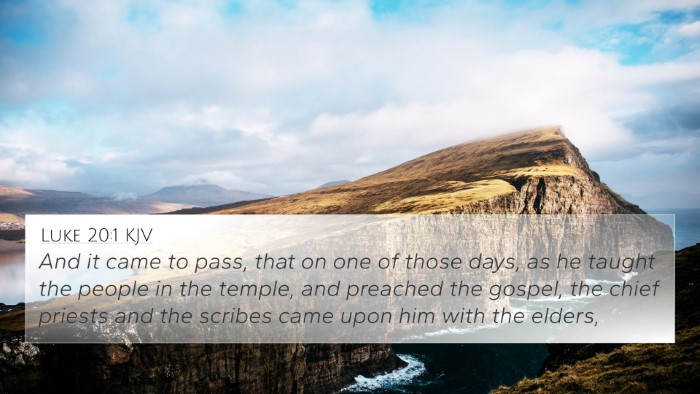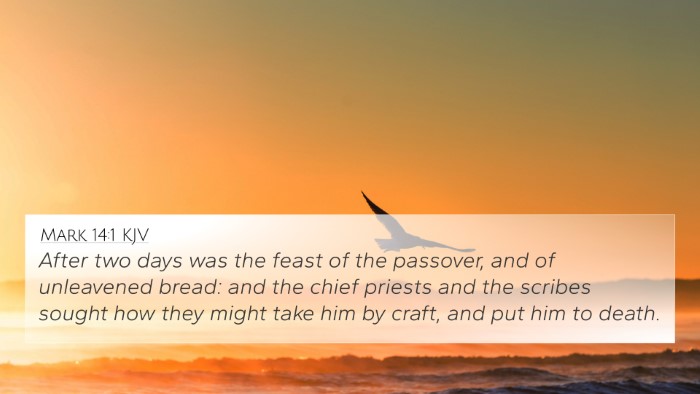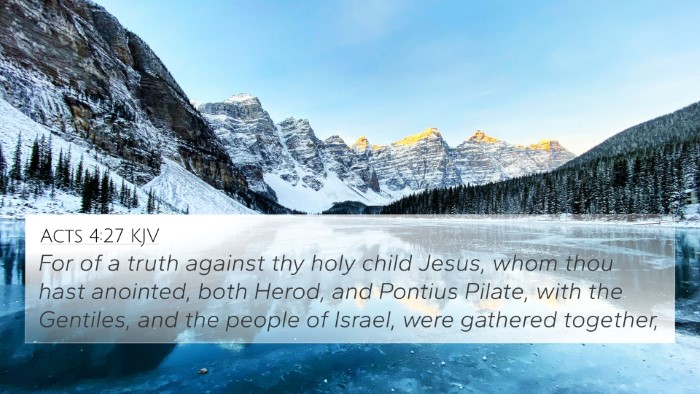Understanding Mark 11:27
Verse: "And they came again to Jerusalem: and as he was walking in the temple, there came to him the chief priests, and the scribes, and the elders."
Summary of Meaning
Mark 11:27 presents a critical moment in the ministry of Jesus, where He returns to Jerusalem and engages with the religious authorities. The verse highlights the growing tension between Jesus and the Jewish leaders, setting the stage for a significant confrontation regarding His authority and the true nature of His mission.
Insights from Commentaries
- Matthew Henry: Matthew Henry emphasizes the courageous stance of Jesus as He does not shy away from the religious leaders despite their animosity. It signifies Jesus’s authority and mission to confront the established religious norms that were not aligned with God’s will.
- Albert Barnes: Barnes notes that the chief priests, scribes, and elders represent the sanctioning body of the Jewish faith. Their coming to Jesus signifies both their challenge to His authority and a demand for accountability. Barnes points out that this interaction is pivotal in illustrating the conflict between Jesus’s teachings and the religious leaders’ traditions.
- Adam Clarke: Clarke provides insight into the implications of this encounter. He discusses how the temple's setting serves as a backdrop for the conflict, indicating that the authority of the established religion is being questioned. Clarke highlights that this moment foreshadows the ultimate rejection of Jesus by the Jewish leaders.
Bible Cross-References
This verse connects with numerous other scriptures that highlight the tension between Jesus and the religious authorities, as well as the broader themes of authority, faith, and confrontation. Here are some pertinent cross-references:
- Matthew 21:23-27: A similar encounter where Jesus is challenged regarding His authority.
- Luke 20:1-8: Describes the challenge posed by the religious leaders to Jesus's authority.
- John 2:18-22: The initial challenge from the Jews regarding Jesus's authority to cleanse the temple.
- Mark 11:18: The reaction of the chief priests and scribes to Jesus’s actions in the temple.
- Mark 12:12: The growing hostility of the religious authorities towards Jesus.
- Acts 4:5-7: The similar patterns of opposition faced by the apostles following Jesus’s ministry.
- Matthew 23: Jesus’s rebuke of the Pharisees, showcasing the issues with their authority and practices.
Thematic Connections
This verse and its associated cross-references illustrate a broader theme of the conflict between divine authority and human traditions. Throughout the Gospels, Jesus’s teachings often challenge the status quo of religious practices and emphasize a more profound understanding of faith. For those studying these scriptures, tools for Bible cross-referencing can be invaluable in recognizing these themes.
Using Bible Cross-References for Further Study
Understanding how to find connections between Bible verses can enrich one’s study and application of scripture. A Bible concordance can help identify associated verses that delve into similar interactions, and thematic connections can be drawn across different books of the Bible. This enhances our understanding of God’s revelation through various contexts.
Exploring Related Themes
Exploring themes such as encounters with authority, faith in opposition, and the challenge of tradition vs. revelation can lead to a deeper appreciation of the narrative. For instance, the links between the teachings of the prophets and the apostolic messages reveal a consistent thread of God's truth challenging human systems.
Conclusion
Mark 11:27 serves as a remarkable lens through which to view Jesus's ministry and the responses of religious leaders. The importance of scripture cross-referencing lies in deepening our understanding of these interactions and their implications for faith and practice today. Engaging with these texts allows believers to appreciate the complexities of the Biblical narrative and apply its lessons effectively.

